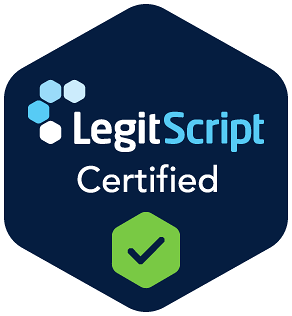Comprehensive Guide to Suboxone Therapy Near Me in Norwalk
Understanding Suboxone Therapy
Suboxone therapy near me is a proven and effective treatment for individuals struggling with opioid addiction. It is a medication-assisted treatment (MAT) that combines buprenorphine and naloxone to help reduce cravings and withdrawal symptoms. At our Norwalk clinic, we provide personalized treatment plans to ensure each patient receives the care they need to achieve long-term recovery.
Why Choose Suboxone Therapy in Norwalk?
Finding high-quality addiction treatment near you is crucial for a successful recovery. Our Suboxone clinic in Norwalk offers comprehensive services tailored to each patient’s unique needs. Here’s why our facility stands out:
- Expert Medical Professionals – Our team of experienced doctors and therapists specialize in addiction treatment.
- Personalized Treatment Plans – We customize your Suboxone therapy based on your medical history and addiction severity.
- Confidential and Supportive Environment – Your privacy and comfort are our top priorities.
- Flexible Appointment Scheduling – We provide convenient scheduling options, including telemedicine consultations.
- Affordable and Insurance-Friendly Services – We accept most insurance plans and offer flexible payment options.
How Suboxone Works for Opioid Addiction
Suboxone contains two active ingredients:
- Buprenorphine – A partial opioid agonist that binds to opioid receptors, reducing withdrawal symptoms and cravings without creating a high.
- Naloxone – An opioid antagonist that helps prevent misuse by blocking the effects of opioids if injected.
This combination makes Suboxone a safe and effective treatment for individuals seeking to break free from opioid dependency.
The Benefits of Suboxone Treatment
Suboxone therapy provides numerous benefits, including:
- Reduces Cravings and Withdrawal Symptoms – Helps patients manage withdrawal without the severe side effects of quitting opioids abruptly.
- Lower Risk of Abuse – The presence of naloxone discourages misuse.
- Convenient Administration – Taken as a dissolvable film or tablet under the tongue, making it easy to use at home.
- Improves Mental Clarity and Stability – Allows patients to function normally in daily life while receiving treatment.
- Supports Long-Term Recovery – Works best when combined with counseling and behavioral therapy.
What to Expect During Suboxone Treatment in Norwalk
1. Initial Consultation
Your recovery journey begins with a comprehensive medical assessment where our specialists evaluate your medical history, addiction severity, and personal treatment goals.
2. Induction Phase
During this phase, patients begin taking Suboxone under medical supervision. This ensures the correct dosage is administered to manage withdrawal symptoms effectively.
3. Stabilization Phase
Once withdrawal symptoms are under control, the dosage is adjusted for optimal effectiveness. Our team closely monitors progress and makes necessary adjustments to ensure the best results.
4. Maintenance Phase
Patients continue with their prescribed Suboxone dosage while attending therapy sessions and support groups to reinforce their recovery.
5. Tapering and Recovery
Under medical supervision, the dosage is gradually reduced as patients gain control over their addiction. The goal is to achieve complete sobriety while maintaining physical and mental stability.
Is Suboxone Treatment Right for You?
Suboxone therapy is recommended for individuals who:
- Are struggling with opioid dependence
- Have experienced withdrawal symptoms when attempting to quit
- Are committed to a structured treatment program
- Do not have contraindications such as severe liver issues
Our Norwalk-based specialists will assess your condition and determine if Suboxone is the right treatment for you.
Finding a Suboxone Clinic Near You in Norwalk
If you or a loved one is searching for Suboxone therapy near me in Norwalk, our clinic provides compassionate, effective, and evidence-based treatment. We are dedicated to helping individuals overcome opioid addiction and regain control of their lives.
Why Our Norwalk Suboxone Clinic is the Best Choice
- Board-Certified Addiction Specialists – Ensuring safe and effective treatment.
- Comprehensive Support – Combining medication-assisted treatment with therapy.
- Convenient Location – Easily accessible for patients in and around Norwalk.
- Telemedicine Services – Remote consultations for added convenience.
Start Your Recovery Today
Opioid addiction can be challenging, but recovery is possible with the right treatment and support. Our Norwalk-based Suboxone clinic is committed to helping you achieve a healthier, addiction-free life.
Contact us today to schedule your consultation and take the first step toward recovery.




